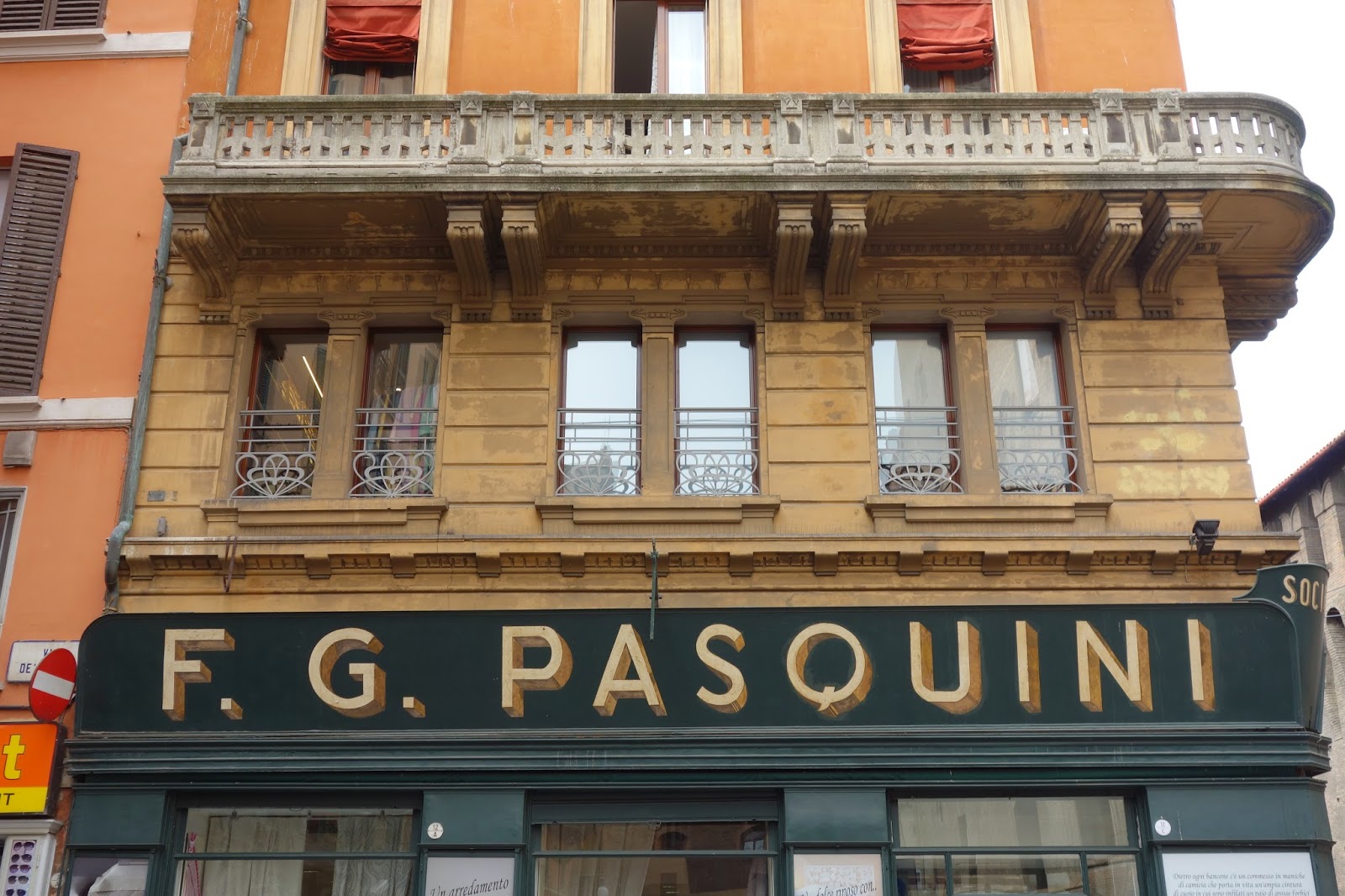We really only had one day in Bologna - schedules being what they are- and we had sandwiched this trip in between a fairly lengthy Canadian Maritimes trip and our departure for the south for the winter months... so you make due with the time frame you have... as I mentioned we had been to Bologna before and so had done the touristy stuff before this trip - but we had not been to the library nor the anatomical theater... so we headed in that direction...
the Anatomical Theatre of the Archiginnasio in Bologna (whose building dates from 1563 and the anatomical theatre from 1637).
The building is made up of two levels with a lower portico and inner courtyard that surround the former church of Santa Maria dei Bulgari. The upper level houses the study rooms of the legisti (students who studied civil and canon law), and the artisti (students of other subjects such as philosophy, literature and medicine). It is accessible by two staircases, separated by a study area. Each of the legisti and the artisti had ten classrooms in their respective wings, however only the legisti, who were considered the university's top students, had their classrooms in the main hallway.
The walls of the building form an enormous heraldic complex, made up of seven thousand coats of arms hanging on its walls. The honor of putting a coat of arms on the walls was reserved for those students that participated as heads of the nationes. The coats of arms indicate the home country or city of the student, along with the student's name. They were fortunately spared from the destruction ordered by the republican government in 1797 and the Allied bombings during the Second World War. (source wikipedia)
The upper level still houses the Anatomical theater of the Archiginnasio, which was built in 1637 by Antonio Levanti. It is shaped like an amphitheater and made from fir wood with a coffer ceiling, decorated with statues. As a result of Allied bombings on January 29, 1944, the room suffered extensive damage, but was subsequently restored using pictures and paintings of the intact theater. It is overlooked by the ornate seat of the professor, topped by a baldaquin and supported by the statues of two naked and skinless men, known as "gli spellati" (the skinned ones), made by Ercole Lelli. The numerous sculptures that decorated the walls represent doctors from ancient and modern times: the busts are of people considered of lesser importance, while the most revered are represented in full. The two main statues, from left to right, represent Hippocrates and Galen, the most prominent physicians of Greece and Rome, respectively. Another statue on the wall opposite the chair represents a medic holding a nose in his hand: it is a portrayal of Bologna native Gaspare Tagliacozzi, an early pioneer of rhinoplasty. (source - wikipedia)
we exited and returned to the main square of town where the Neptune fountain is the centerpiece-
above the war memorial across from the Neptune fountain and then below a series of interesting things along the way...
so that concludes the Italy trip- it was quick- ten days from start to finish - with a night in Frankfurt for social plans--- but we got away for Phil's big birthday (even though our combined celebration had been the barge trip in Burgundy in May with CBGB) which was the plan... now we are on to discussions about travel for 2015... the dollar is strong against the Euro so I am betting Europe will be seeing us a couple of times in 2015... as always - stay tuned for more travel and food and theater and of course the beloved cat photos- LOL (only kidding- I don't really do a lot of posting of cat photos despite the fact that I do have some really cute ones! LOL)




















































No comments:
Post a Comment